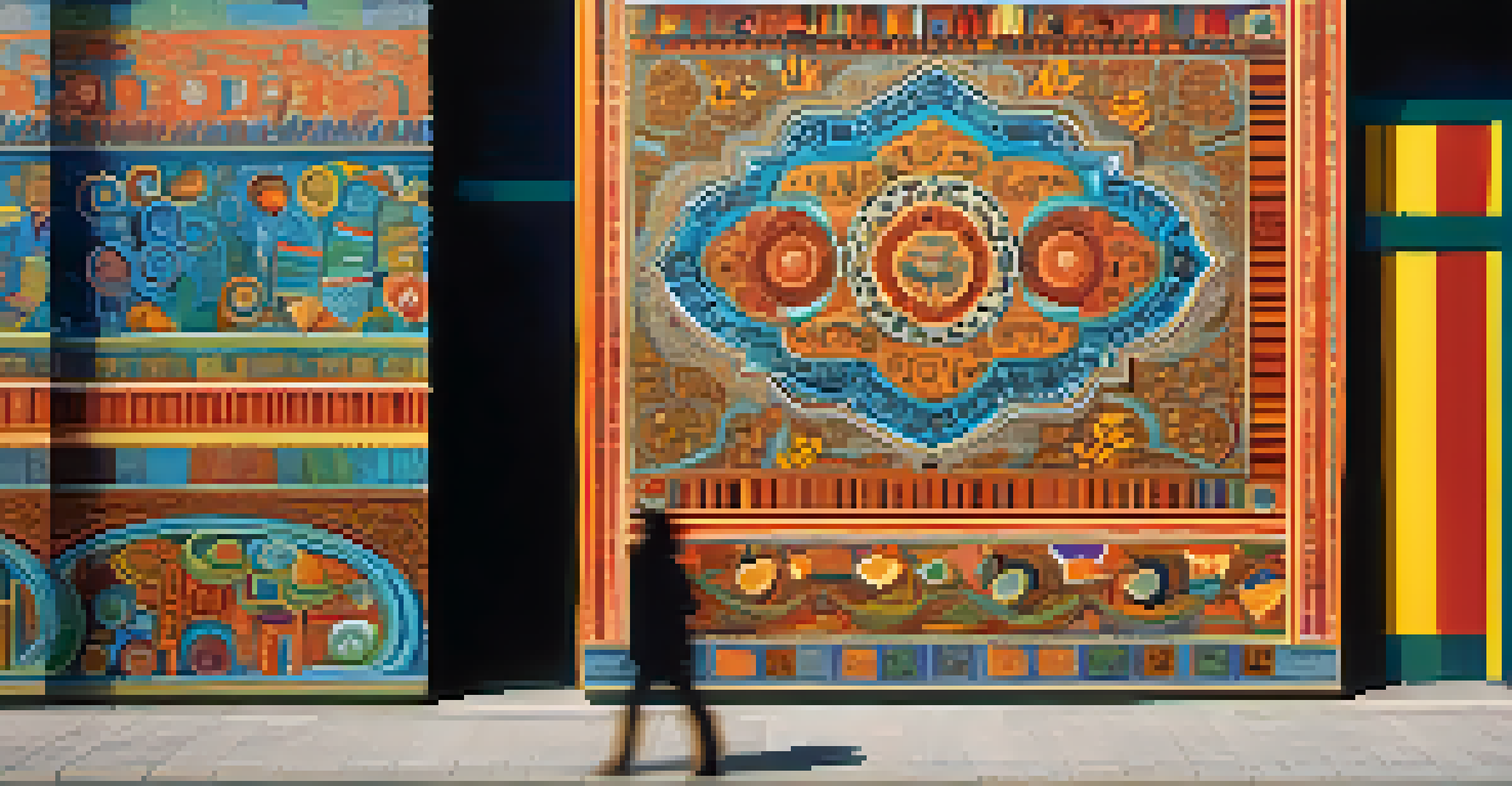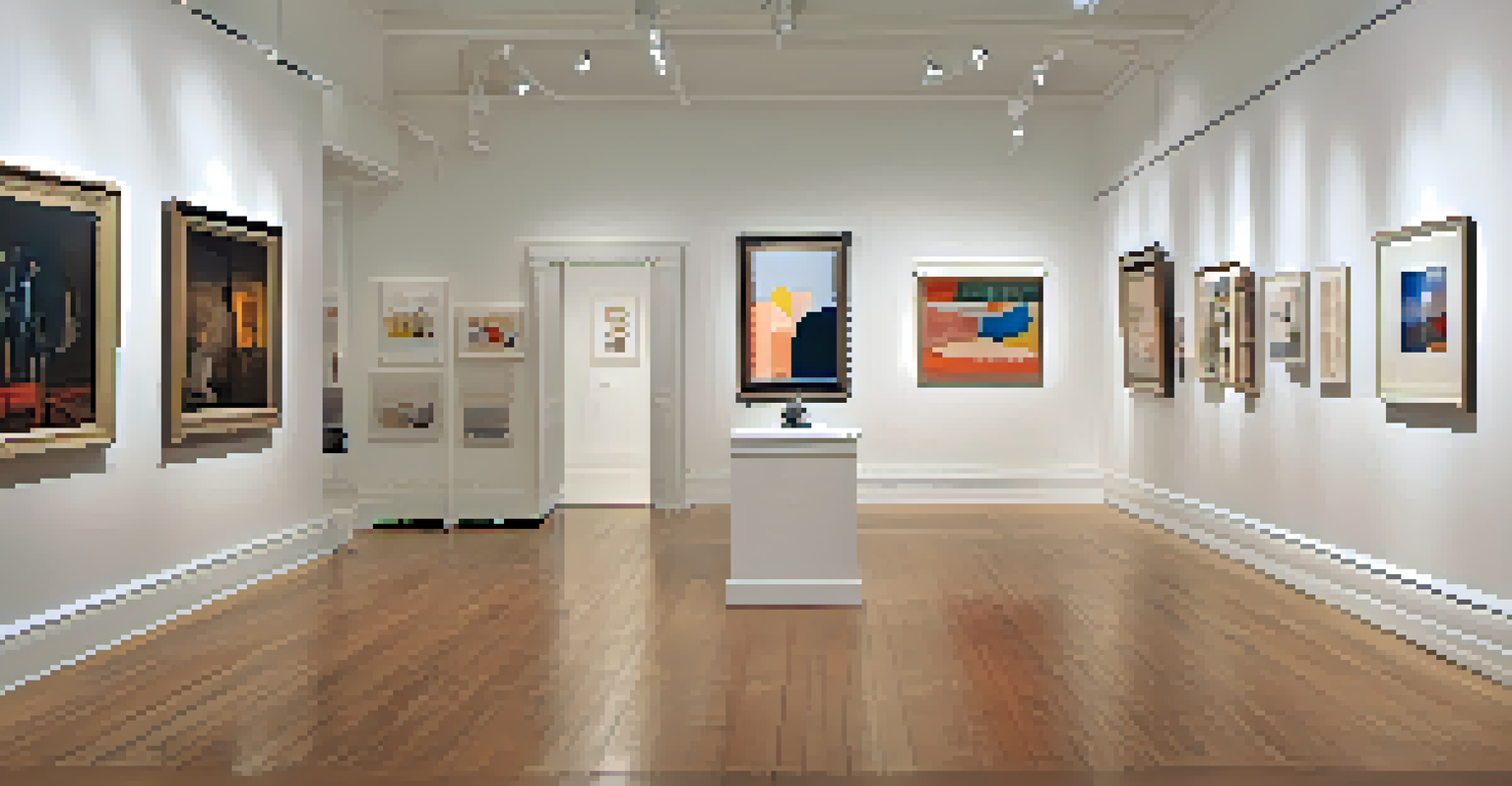Understanding Ethics in Art: A Comprehensive Overview

What Are Ethics in Art and Why Do They Matter?
Ethics in art refers to the moral principles guiding artists and audiences. It encompasses questions about authenticity, representation, and the impact of art on society. Understanding these ethics is crucial because art doesn’t exist in a vacuum; it reflects and influences cultural values.
Art is not a mirror to hold up to society, but a hammer with which to shape it.
For instance, consider the debate around cultural appropriation. When an artist from one culture uses symbols or styles from another, it can lead to discussions about respect and ownership. This aspect of ethics helps us navigate the delicate balance between inspiration and exploitation.
Ultimately, ethics in art encourages deeper conversations about responsibility, creativity, and the role of the artist in society. By engaging with these ideas, we can appreciate art’s power while acknowledging its potential pitfalls.
Historical Perspectives on Art Ethics
Throughout history, the ethics of art have evolved alongside societal changes. For example, during the Renaissance, artists like Michelangelo faced scrutiny regarding their portrayal of religious figures. These early debates about representation set the stage for modern discussions about ethics in art.

In the 20th century, movements such as Dada and Surrealism challenged traditional norms, pushing the boundaries of artistic expression. This era highlighted the need for ethical considerations around censorship and freedom of expression, raising questions about what art should or shouldn't depict.
Ethics Shape Art's Cultural Impact
Ethics in art guide both creation and interpretation, influencing how artists reflect and engage with societal values.
Today, we can look back on these historical contexts to better understand our current ethical dilemmas in art. By learning from the past, we can make more informed decisions about how we create and interact with art in the present.
Cultural Appropriation vs. Cultural Appreciation
Cultural appropriation occurs when artists borrow elements from another culture without understanding or respecting its significance. This practice can lead to misunderstandings and reinforce stereotypes, which is why it’s a hot topic in discussions about art ethics.
Culture is not a costume. It is a living, breathing thing that cannot be stripped down and worn like a garment.
On the other hand, cultural appreciation involves a respectful understanding and celebration of another culture’s traditions. For example, an artist who collaborates with cultural representatives to create work that honors their heritage is engaging in appreciation rather than appropriation.
Navigating this distinction is essential for artists today. By fostering genuine connections and understanding, creators can celebrate diversity while avoiding ethical missteps that may harm others.
The Role of Intention in Artistic Expression
The intention behind a piece of art plays a crucial role in its ethical implications. An artist may create work meant to provoke thought or challenge societal norms, but the reception can vary greatly based on personal and cultural perspectives.
For instance, a provocative painting may aim to critique social issues, yet it could also unintentionally perpetuate harm if not handled delicately. This highlights the importance of artists being aware not just of what they create, but how their work might be interpreted.
Cultural Appropriation vs. Appreciation
Understanding the difference between cultural appropriation and appreciation is essential for artists to honor traditions respectfully.
Ultimately, the conversation around intention encourages artists to reflect on their motivations and the potential impact of their work. This self-awareness can lead to more responsible and thoughtful artistic practices.
The Impact of Art on Society and Vice Versa
Art has a profound influence on society, shaping opinions and sparking movements. From protest art to pieces celebrating diversity, artists have the power to inspire change and challenge the status quo. This connection underscores the ethical responsibility artists bear.
Conversely, societal values also shape artistic expression. Artists often reflect the beliefs, struggles, and aspirations of their communities, meaning that ethics in art is a two-way street. This interplay raises questions about accountability and representation in the creative process.
Understanding this dynamic is essential for anyone involved in the art world. By recognizing how art and society influence each other, we can better navigate the ethical landscape that comes with creation and consumption.
The Ethics of Art Ownership and Copyright
Copyright laws are essential in protecting an artist’s work, but they can also raise ethical questions. For instance, when a piece of art is reproduced without permission, it not only infringes on copyright but also disrespects the artist’s creative effort.
Furthermore, the issue of ownership becomes complicated when art is sold and resold. How do we ensure that artists receive fair compensation for their work over time? This ongoing debate highlights the need for ethical practices in the art market.
Intention Matters in Artistic Work
An artist's intention behind their work significantly impacts its ethical implications and the way it is received by audiences.
By understanding the intricacies of copyright and ownership, both artists and consumers can work towards a more equitable art world. Ethical practices in this area can help support artists while respecting their rights.
Contemporary Challenges in Art Ethics
Today’s artists face a myriad of ethical challenges, from digital reproduction to social media presence. The ease of sharing art online raises questions about ownership and attribution, making it crucial for artists to be vigilant about their rights.
Additionally, the rise of AI-generated art introduces new ethical dilemmas. Who owns the work created by algorithms, and how does this impact traditional artists? These questions force us to rethink our definitions of creativity and authorship.

By engaging with these contemporary issues, artists and audiences can foster a dialogue that promotes ethical practices. This awareness is vital for navigating the rapidly changing landscape of the art world.